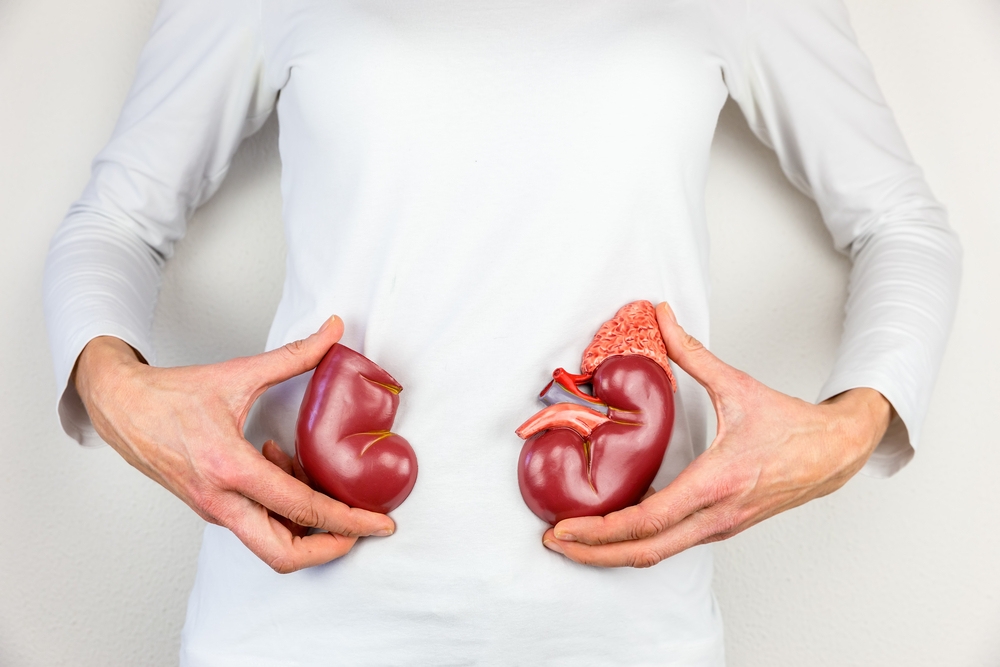
Lao Wang next door found that there was a lot of foam in the urinal when he urinated recently. But also for a long time. I always feel bored all over, my feet are swollen, and I press a pit. After going to the hospital to draw blood and test urine for a lot of tests, the doctor said Lao Wang was [nephrotic syndrome]. I need to do a kidney biopsy and take a little kidney tissue out for tests to find out Lao Wang’s condition.
Hearing this, Lao Wang got a fright. What an important thing kidney is, how can you take it casually? Moreover, blood and urine have been drawn for so many tests. How can you still not know the disease condition? You have to take some kidneys to know the situation? Is there something fishy about what?
After much hesitation, Lao Wang told the doctor his worries and saw what the doctor said.
What is a kidney puncture
Kidney puncture is like an injection. The slight difference is that under the guidance of B-ultrasound, the needle is slightly thicker and longer than the ordinary needle. It is quickly inserted from the back to the surface of the kidney and then pulled out quickly. This process only takes a few seconds, and will be locally anesthetized in advance, with no or only slight pain.
After the needle for kidney puncture is pulled out, centimeters of kidney tissue will be taken from the needle, and doctors will use this [removed kidney] to make a diagnosis under a microscope.
Why do I have to take my kidney when I have a blood test and a urine test
If the illness is compared to a house, blood and urine tests can only let the doctor know that you have a house. However, whether this house is one room and one hall, or two rooms and one hall, can only be seen when you enter the house.
Kidney puncture is such an examination of [entering the house]. Only when the specific structure of the [house] is clearly understood can a detailed treatment plan be formulated for the disease condition.
If you don’t do kidney biopsy and don’t know the specific situation inside the [house], the treatment of the disease is like the blind touching the elephant, delaying the disease.

Who needs a kidney puncture
-
When urinating, foam increases, urine color turns red, lower limbs or face edema for unknown reasons, and doctors diagnose patients with [proteinuria] [hematuria] [nephritis] [nephrotic syndrome];
-
Renal failure that cannot be explained by routine examination;
-
In the past, people diagnosed with basic diseases such as [hepatitis B] [systemic lupus erythematosus] [diabetes] [hypertension] have recently developed proteinuria or hematuria, or renal function deterioration.
-
In the past, renal puncture has been performed, and after targeted treatment, the therapeutic effect is not good.
-
Renal transplant patients have obvious decline of transplanted kidney function, unclear causes or poor therapeutic effect.
Who try not to do kidney puncture
-
For various reasons, patients with only one kidney;
-
Patients with obvious bleeding tendency (blood is not easy to coagulate after bleeding);
-
Patients suffering from mental diseases and unable to cooperate with renal puncture;
-
B-ultrasound found patients with renal shrinkage, polycystic kidney, cavernous kidney and renal hemangioma.
Who is not suitable for kidney puncture for the time being
-
Patients whose blood pressure is still higher than 160/90 mmHg after drug treatment;
-
Excessive obesity, massive pleural effusion and ascites, unable to turn over;
-
Patients with renal position malformation, renal tumor, kidney or infection around kidney;
-
The overall condition is serious, and doctors do not recommend renal puncture after specific evaluation.
Of course, whether the final patient is suitable for puncture must be determined by clinicians according to the needs of diagnosis and treatment.
Need to pay attention to what kidney puncture
Before inspection
- Relax, Eat and sleep. Don’t eat anything that is prone to constipation or belly swelling. Such as beans, sweet potatoes, potatoes, Milk, etc. Practice kidney puncture posture and holding your breath. Kidney puncture requires the patient to lie prone, If necessary, put a pillow about 10 cm high on your abdomen. Practice holding your breath in this position. Hold your breath for about 10 ~ 20 seconds. Practice defecation and urination in bed supine position. In order to prevent bleeding, the patient is required to keep at least 6 ~ 8 hours absolute supine position after kidney puncture, and cannot get out of bed within 24 hours. The defecation and urination problem is solved only by lying on the bed. Don’t be shy!
After inspection
- Lie flat on the bed for 24 hours and do not move hard. Observe heart rate and blood pressure. If blood pressure decreases or heart rate increases, ask a doctor to check immediately. Drink more water and urinate more. And observe the color of urine. If you find that the urine turns dark or red, ask a doctor to check immediately. Severe pain and soreness occurred in the waist on the puncture side after puncture. Please ask a doctor to check immediately.
How to Treat Renal Biopsy Report
Because kidney disease is a long-term chronic disease, patients need to properly keep their own renal biopsy report, which provides important reference value for subsequent diagnosis and treatment of the disease.
When the doctor said this, Lao Wang breathed a long sigh of relief and his small heart fell back from his throat. The doctor looked at Lao Wang’s embarrassing appearance and said with a smile, “Kidney puncture is not scary at all, and the little kidney tissue taken cannot buy the latest iPhone. It is the right way to pay attention to your body changes and look at diseases and examinations rationally.”
Responsible Editor: Painting
This article has passed the peer review of Dr. Clove’s peer review expert committee.
